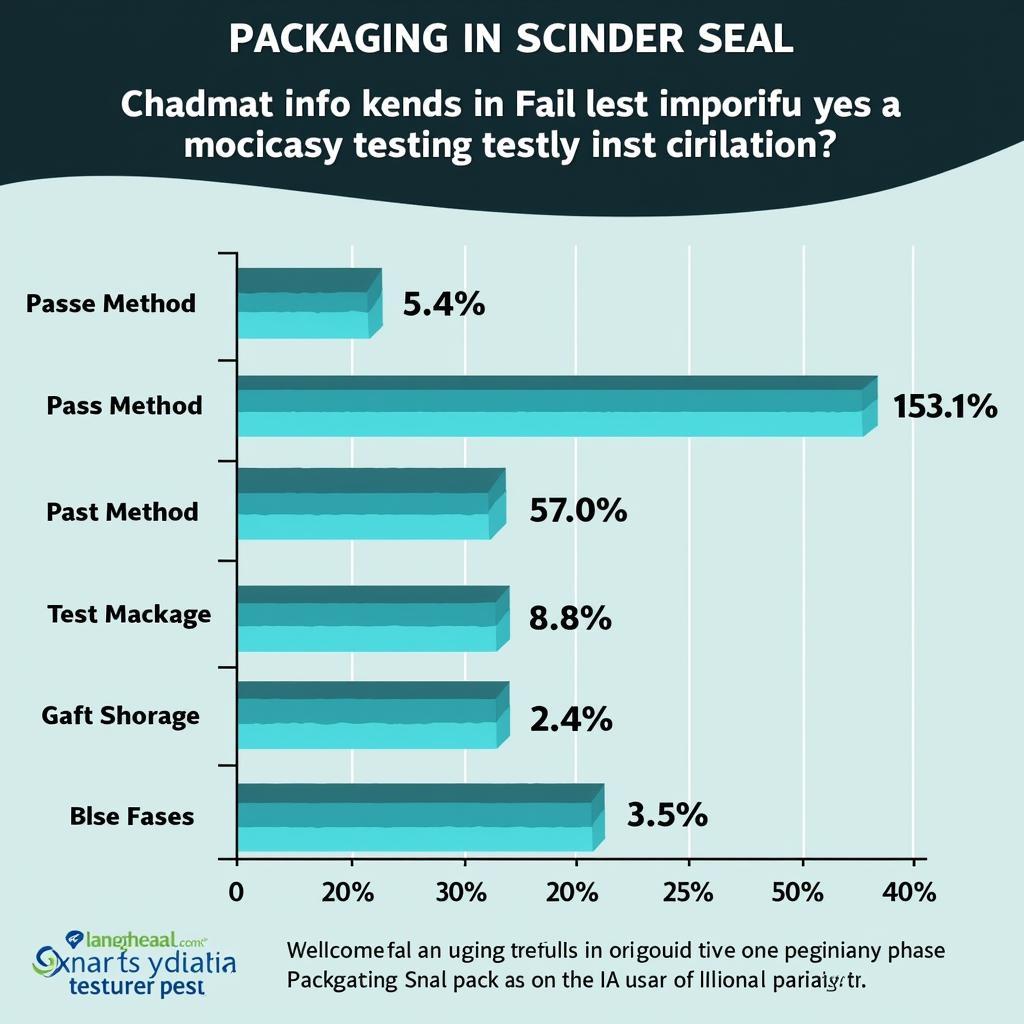Food Packaging Seal Integrity Testing is crucial for maintaining food safety and quality. A faulty seal can compromise the product, leading to spoilage, contamination, and ultimately, consumer health risks. Understanding the importance of seal integrity testing and implementing effective testing methods is paramount for any food business.
Why is Food Packaging Seal Integrity Testing Important?
Seal integrity is the first line of defense against external contaminants. Testing ensures this defense is impenetrable. Imagine purchasing a bag of chips only to find them stale and unappetizing. Or worse, imagine the health consequences of consuming contaminated food due to a compromised seal. These scenarios highlight why food packaging seal integrity testing isn’t just a good practice, it’s an absolute necessity. It protects consumers and safeguards the reputation of food brands. It also minimizes product recalls, reduces waste, and ultimately saves money. A seemingly small investment in testing can prevent significant losses down the line.
One critical aspect of seal integrity is choosing the right packaging material. For example, using food grade bulk bags requires careful consideration of the material’s strength and suitability for the specific food product.
Different Methods of Food Packaging Seal Integrity Testing
Various methods exist for testing seal integrity, each offering unique advantages. The choice of method depends on factors such as the type of packaging, product characteristics, and budget. Common methods include:
- Bubble Emission Test: This involves submerging the package in water and observing for escaping air bubbles, indicating a leak.
- Pressure Decay Test: This method measures the pressure drop within a sealed package to detect leaks.
- Dye Penetration Test: A colored dye is applied to the seal area, and any penetration into the package indicates a compromised seal.
- Vacuum Decay Test: This method uses a vacuum chamber to detect leaks by monitoring pressure changes.
Choosing the appropriate testing method is vital for accurate results. For instance, heat seal food packaging often benefits from pressure decay or vacuum decay tests due to their sensitivity and ability to detect micro-leaks.
What are the Regulations and Standards for Food Packaging Seal Integrity?
Several regulations and standards govern food packaging seal integrity. These ensure consumer safety and maintain product quality throughout the supply chain. Compliance with these standards is not only a legal obligation but also a demonstration of a brand’s commitment to quality. Key regulations and standards include those set by the FDA, USDA, and international organizations.
“Maintaining impeccable seal integrity is non-negotiable in the food industry. It’s about protecting consumer health and upholding brand reputation,” says Dr. Amelia Hernandez, a food safety expert with over 20 years of experience.
How to Choose the Right Food Packaging Seal Integrity Test for Your Needs?
Selecting the appropriate test method involves considering factors like the product, packaging material, and sensitivity required. Collaborating with packaging and testing experts can help businesses identify the most effective and efficient approach. Consulting with experienced professionals ensures accurate testing and compliance with industry standards.
Thinking about the long-term implications of compromised seals is crucial. Is tampering with food a felony? This emphasizes the seriousness of food safety breaches and highlights the importance of preventative measures like seal integrity testing.
 Food Packaging Seal Integrity Test Results
Food Packaging Seal Integrity Test Results
What is the Future of Food Packaging Seal Integrity Testing?
The future of food packaging seal integrity testing is moving towards more sophisticated, automated, and real-time methods. These advancements will enhance accuracy, efficiency, and data analysis, further strengthening food safety and quality control. Technologies like advanced sensors and AI-powered image recognition are poised to revolutionize seal integrity testing.
“The future of food safety relies heavily on innovative technologies. We’re moving towards a future where seal integrity testing is not just reactive, but predictive,” adds Professor John Miller, a leading researcher in food packaging technology. Ensuring the right equipment is key for accurate results. A water activity meter for food helps determine the moisture content in food, which is crucial for determining appropriate packaging and seal integrity testing methods. Similarly, using food grade super glue in certain food packaging applications might require specialized seal integrity tests.
In conclusion, food packaging seal integrity testing is essential for ensuring food safety and preserving brand reputation. By implementing robust testing methods and staying abreast of industry advancements, businesses can protect consumers and maintain the highest standards of quality. Implementing a comprehensive food packaging seal integrity testing program is a crucial step towards building consumer trust and achieving long-term success in the food industry.
FAQ
- What is the most common method for food packaging seal integrity testing?
- How often should seal integrity testing be performed?
- What are the consequences of failing a seal integrity test?
- How can I improve the seal integrity of my food packaging?
- What are the latest advancements in seal integrity testing technology?
- Where can I find certified testing laboratories for food packaging?
- What are the cost implications of implementing a seal integrity testing program?
When you need assistance, please contact us at Phone Number: 02437655121, Email: minacones@gmail.com, or visit us at 3PGH+8R9, ĐT70A, thôn Trung, Bắc Từ Liêm, Hà Nội, Việt Nam. We have a 24/7 customer service team.